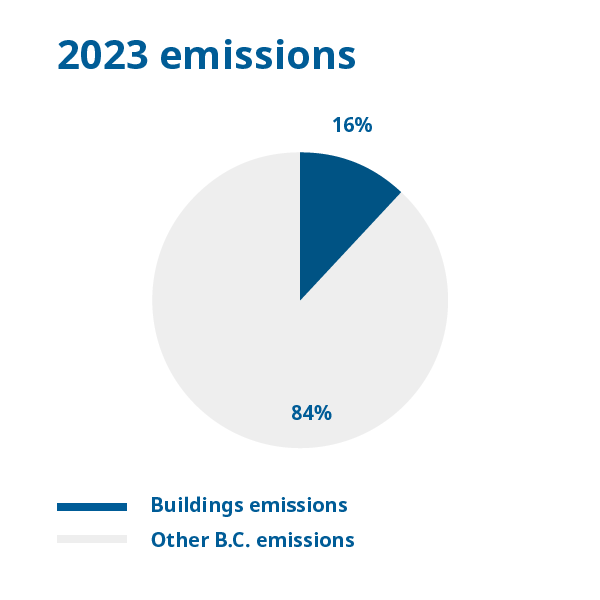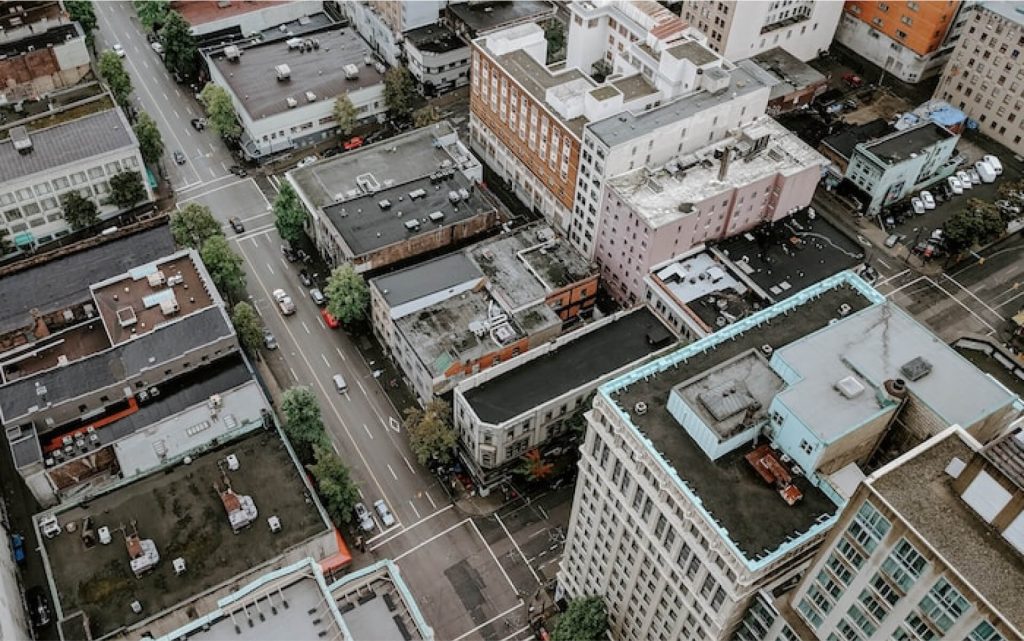How buildings cause emissions
Most emissions from buildings comes from the natural gas we use to heat them.
Buildings are also tied to emissions from industry, because we use oil, gas and coal to:
- Make building materials like glass, cement and steel
- Move building materials
- Power construction equipment
- Tear down buildings
Tracking emissions from buildings

Emissions from homes and commercial buildings were 16% of B.C.’s total emissions in 2023.
Reducing emissions from buildings
We’re working toward buildings that don’t cause climate pollution.
By 2030, all new buildings in B.C. will be required to have zero emissions. This can be achieved with choices like:
- Energy-efficient heating and hot water equipment, such as heat pumps
- More renewable building materials, such as wood fibre insulation
- Better insulation and airtight windows and doors to keep heat in
After 2030, all new space and water heating equipment sold and installed in B.C. will be 100% efficient.

Getting buildings ready for climate change
We’re helping the construction industry make more energy-efficient buildings that have less of an impact on the environment.
B.C. is taking action
Explore how we are making buildings more energy-efficient and promoting clean building materials.
-
Adopting mass timber products
Mass timber is made by joining layers of lumber to create structural parts for buildings. It offers significant reductions in greenhouse gas emissions from construction and creates new economic opportunities in B.C.
-
Building net-zero energy readiness into the BC Building Code
All new buildings will be net-zero energy ready by 2032. This is being supported by incremental changes to energy efficiency rules in the BC Building Code.
-
Encouraging energy-efficient commercial buildings
Funding and incentives are available to support energy-efficient commercial building:
- design
- construction
- renovation



